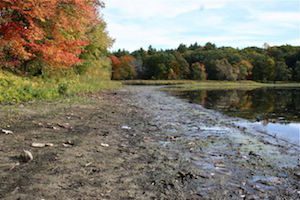Here are ten takeaway ideas developed in The Boatman.
- Henry was a boatman, more than he was a woodsman. A lifelong river rat, more than a social experimenter at Walden Pond. His lifelong “sense of place” emerged from boating, walking, and skating the Assabet, Sudbury, and Concord Rivers, which radiated away from the the confluence at Egg Rock.
- Egg Rock (where his three river met) was the axis mundi of Thoreau’s life, as it was for the Native Americans who occupied the valley for thousands of years. Walden is the more important public place, being the locus of his celebrated experiment and the site of his literary masterpiece.
- By the summer of 1859, Thoreau had become the town’s most highly regarded scientific expert. By community vote, he was invited to serve as a paid-consultant for what was essentially America’s first regional environmental assessment: a class-action lawsuit that ended in political corruption three years later.
- That consultancy led to an eighteen-month-long pro bono investigation of river science that remained unfinished and unpublished at the time of his death. His “River Project,” erroneously called the “River Survey,” was the most rigorously analytical and theoretical work of his lifetime. The Boatman publishes this work for the first time, treating it like a lost manuscript of a famous author.
- Thoreau lived amidst and appreciated the many changes to his river system that were caused by the human makeover of the 19th century. Dams, canals, bridges, and near-complete deforestation improved his sailing, rowing and skating, botanizing, and work as a naturalist.
- During his river years (late 1850-late 1860), Thoreau’s sense of the wild moved away from naive assumptions about pristine conditions toward the unpredictable dynamism of landscape changes taking place around him .
- The Leaning Hemlocks –Concord’s most popular site for Trancendentalist and Victorian-era boaters– was a landslide caused by enhanced bank undercutting, caused by the poor design of the Union Turnpike bridge. Thoreau, who worked this out as a research task, thought that human actions had enhanced, rather than detracted from its beauty.
- Thoreau should be credited for his leadership on dam removal, the restoring of rivers to their natural flow conditions.
- The water view from the western window of the Thoreau family residence at 255 Main Street, was analogous to the water view from his doorway at Walden Pond. The former he saw for eleven years when writing his naturalist’s Journal. The former he saw for two years when writing his transcendentalist Journal and a variety of documents.
- In 1862, the meadowlands responsible for colonial settlement were given up for lost. Ironically, this set the stages for their later celebration as National Wild and Scenic Rivers, and their preservation as National Wildlife Refuges.
Photo: Fairhaven Bay’s south shore during low water drought conditions.
